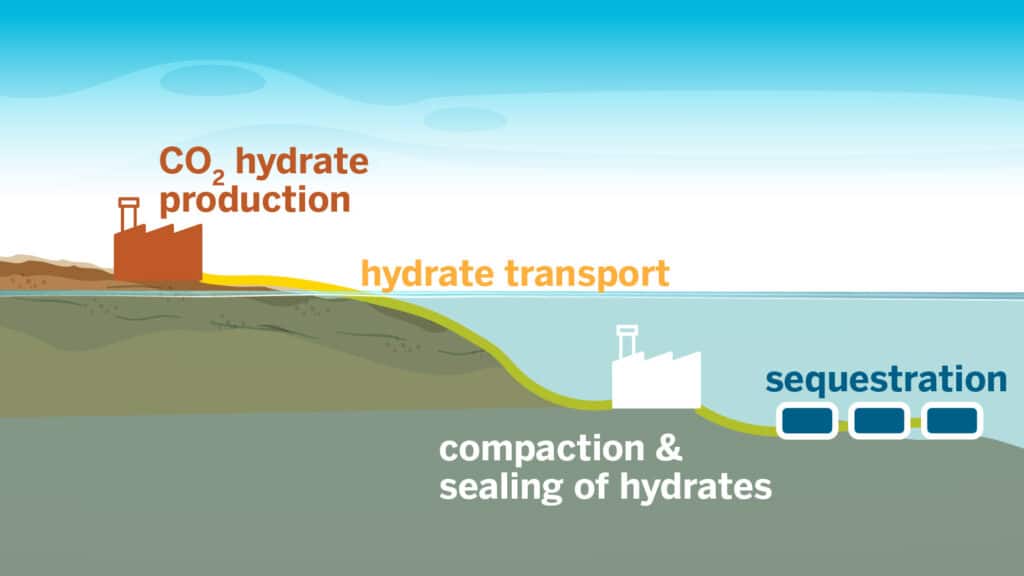Researchers at The University of Texas at Austin have developed a groundbreaking, chemical-free technique for rapidly storing atmospheric carbon in the ocean, offering a promising solution to combat climate change.
In a significant breakthrough addressing climate change, researchers at The University of Texas at Austin have developed a novel method for rapidly and safely storing carbon dioxide (CO2) captured from the atmosphere. This innovative technology, published in ACS Sustainable Chemistry & Engineering, promises to transform how we sequester carbon without the harmful chemical accelerants used in current methods.
The new technique leverages ultrafast formation of carbon dioxide hydrates — ice-like substances capable of trapping CO2 in the ocean. This method shows a sixfold increase in the hydrate formation rate compared to previous techniques, making carbon storage faster and more feasible on a large scale.
“We’re staring at a huge challenge — finding a way to safely remove gigatons of carbon from our atmosphere — and hydrates offer a universal solution for carbon storage. For them to be a major piece of the carbon storage pie, we need the technology to grow them rapidly and at scale,” Vaibhav Bahadur, a professor in the Walker Department of Mechanical Engineering at UT Austin and the study’s lead author, said in a news release.
Bahadur’s team successfully developed this method without using harmful chemical promoters, a significant step forward in ensuring the environmental benefits of carbon capture are not offset by the storage process itself.
Carbon dioxide is the primary greenhouse gas responsible for climate change. Traditionally, carbon capture and storage involves injecting CO2 into underground reservoirs, which can also enhance oil recovery. However, this approach has notable drawbacks, including potential carbon leakage, groundwater contamination and seismic risks. Additionally, not all regions have the geological conditions necessary for such storage.
Hydrates offer an alternative with immense potential.
“We are essentially making carbon storage available to every country on the planet that has a coastline,” added Bahadur. “This makes storage more accessible and feasible on a global scale and brings us closer to achieving a sustainable future.”
The key to this new method is magnesium, which acts as a catalyst for hydrate formation and eliminates the need for chemical accelerants. The process is further enhanced by efficiently bubbling CO2 through a specific reactor configuration, which works well with seawater, thus sidestepping the complexities of desalination.

Credit: Cockrell School of Engineering, The University of Texas at Austin
Aside from its primary application in carbon sequestration, this ultrafast hydrate formation technology holds promise for various industries, including desalination, gas separation and gas storage.
The University of Texas at Austin and its researchers have filed for patents related to this groundbreaking technology and are contemplating a startup to commercialize it.

